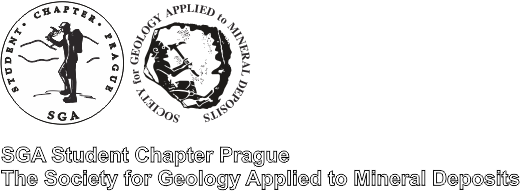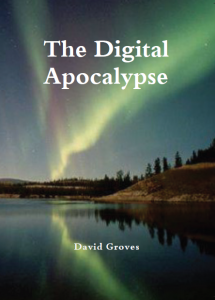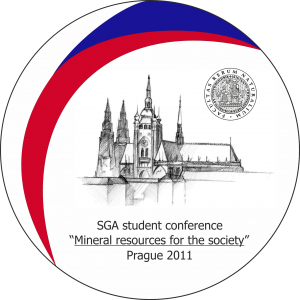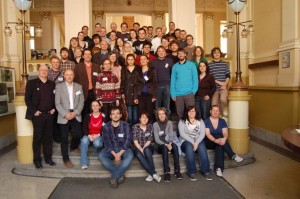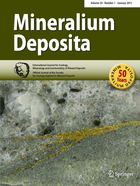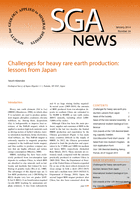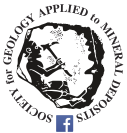Czech Academy of Science, Institute of Geology, v.v.i., Praha Czech Science Foundation project No. P210/14/13600S
in collaboration with the SGA Prague Student Chapter
First announcement of international workshop
Vertical zoning of tin granite plutons in light of modern analytical methods
A 1596 m long fully-cored borehole CS-1 was realized in 1961-1963 in the Cínovec/Zinnwald granite cupola, Krušné Hory/Erzgebirge, Czech Republic. For more than 50 years this borehole represents one of the most inspiring sources of our knowledge about evolution of rare-metal granite plutons through the world.
Vertical zoning of the Cínovec cupola involving albite-lepidolite, albite-zinnwaldite, and albite-biotite granites combined with microgranites, feldspathites, greisens, and flat quartz veins gives an excellent opportunity for the study of magmatic/hydrothermal evolution of Sn- W-Nb-Ta-Li-bearing system and formulation of genetic models.
Rapid development of microanalytical methods in two last decades, electron microprobe and laser-ablation ICP-MS analyses, provides new, high precision chemical and mineralogical data. Back-scattered electron and cathodoluminescence imaging enable objective study of rock- and mineral textures. New data support formulation of more presumable genetic models.
Mining of tin and later also tungsten ores operating in Cínovec from the 16. century was interrupted in 1991. At present, some attempts for re-opening of the mine are going on. So the theoretical models may be immediately used in praxis.
Within the frame of Czech Science Foundation project No. P210/14/13600S we acquire principally new data about whole-rock and mineral changes along the borehole CS-1. In order to present these data, provoke discussion about the most plausible evolutionary model of this granite and deposit, and compare this object with other rare-metal granites worldwide, we organize two-day workshop connected with excursion to old tin mines in Krupka (Bohemia) and Zinnwald (Saxony).
Scope of the workshop: Vertical zoning of tin granite plutons in light of modern analytical methods
Place: Institute of Geology, Praha Time: 6.-7. October 2015 Tentative program:
- Detail information about actual investigation of the Cínovec granite system
- Contribution of other participants
- Discussion about granite-related rare-metal deposits
- Excursion to Krupka and Zinnwald
Contributions to all aspect of utilization of state-of-art methods in investigation of rare- metal granites are welcomed.
In case of your interest to attend this workshop, please contact us for further information.
Contact person: Karel Breiter, E-mail: breiter@gli.cas.cz

